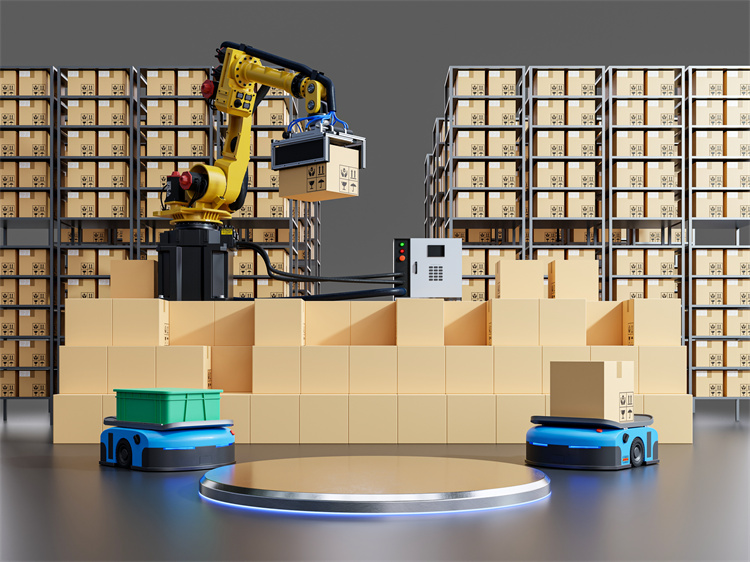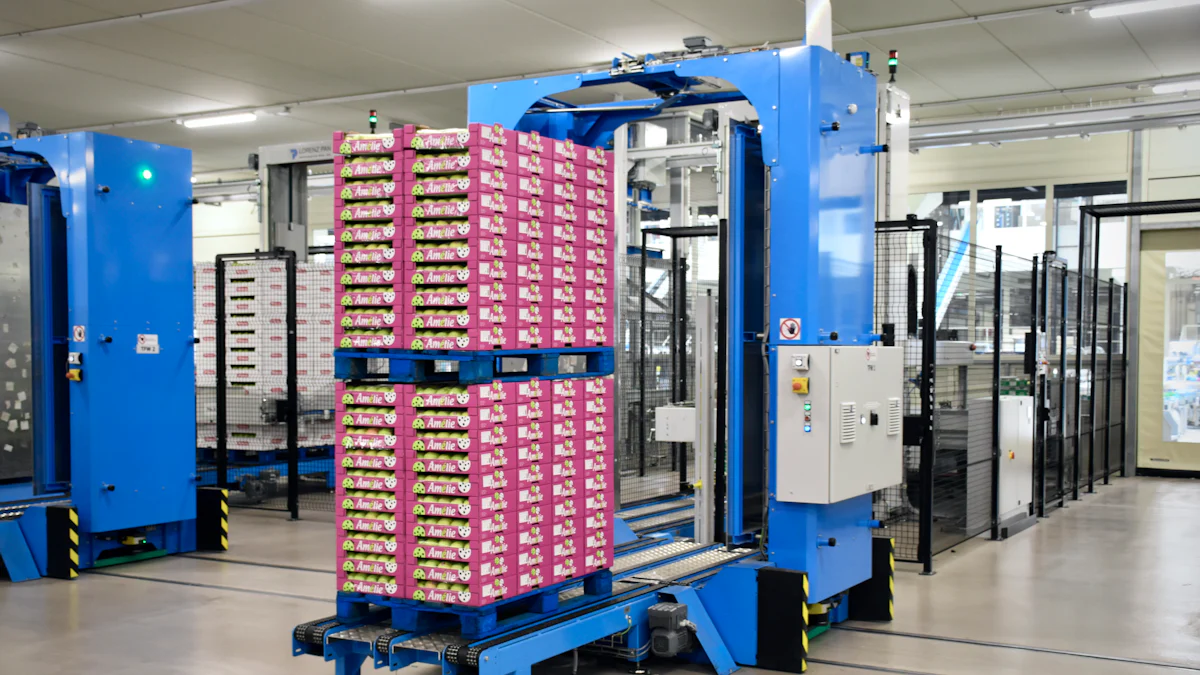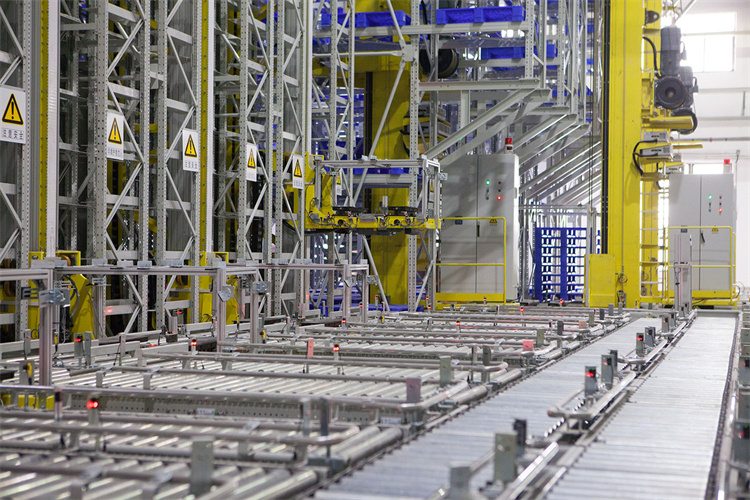The Evolution of Warehousing: Manual to Automation

Warehousing plays a crucial role in the supply chain, acting as the backbone for storing and managing goods. The shift from manual processes to automation marks a significant evolution in this field. Automation enhances efficiency and accuracy, reducing reliance on human labor. A survey shows that 70% of supply chain professionals view automation positively for warehousing. In the United States, over 40% of warehouses have embraced technology and automation. The warehouse automation market is projected to reach $41 billion by 2027, growing at a 15% CAGR. This transformation underscores the importance of modern warehousing technology.
Historical Perspective on Warehousing
Early Warehousing Practices
Manual Labor and Traditional Methods
Warehouses once relied heavily on manual labor. Workers moved goods by hand or with basic tools. This method created inefficiencies. Physical labor burdened workers. Costs increased due to the need for more manpower. Despite these challenges, manual storage and fulfillment solutions remained crucial. They balanced warehouse operations and ensured high performance.
Challenges Faced in Manual Warehousing
Manual warehousing faced several hurdles. Labor-intensive processes slowed operations. Errors occurred frequently, leading to costly mistakes. Traditional methods became bottlenecks. Competition increased, and margins tightened. Businesses needed to find ways to improve efficiency and profitability.
Introduction of Basic Mechanization
Use of Forklifts and Pallet Jacks
The introduction of forklifts and pallet jacks marked a turning point. These tools revolutionized warehouse operations. Workers could move heavier loads with ease. Efficiency improved significantly. The development of better processes began. Warehouses started to see the benefits of mechanization.
Initial Improvements in Efficiency
Basic mechanization brought initial improvements. Labor costs decreased as fewer workers were needed. Speed and accuracy increased. Warehouses operated more smoothly. These changes set the stage for further advancements. The evolution of warehouse automation was underway.
Transition to Automation

Technological Advancements
Introduction of Automated Storage and Retrieval Systems (AS/RS)
Automated Storage and Retrieval Systems (AS/RS) revolutionized warehousing. AS/RS uses computer-controlled systems to store and retrieve products efficiently. These systems minimize human intervention. Warehouses benefit from increased storage density. AS/RS optimizes space utilization. Many industries adopt AS/RS for improved inventory management.
Robotics plays a crucial role in modern warehousing. Robotics plays a crucial role. Robots handle repetitive tasks with precision. Warehouses use robots for picking, packing, and sorting. Robotics reduces human error. Robots work tirelessly, enhancing productivity. Swisslog's solutions showcase robotics' impact on efficiency. Increased profitability results from tailored automation solutions.
Robotics plays a crucial role in modern warehousing. Robots handle repetitive tasks with precision. Warehouses use robots for picking, packing, and sorting. Robotics reduces human error. Robots work tirelessly, enhancing productivity. Swisslog's solutions showcase robotics' impact on efficiency. Increased profitability results from tailored automation solutions.
Impact on Efficiency and Productivity
Automation significantly reduces labor costs. Automation significantly reduces labor. Machines perform tasks previously done by humans. Companies save money by reducing workforce size. JUSDA's partnership with an electronics manufacturer highlights this. A 20% reduction in inventory holding costs was achieved. Automation streamlines operations, cutting expenses.
Automation significantly reduces labor costs. Machines perform tasks previously done by humans. Companies save money by reducing workforce size. JUSDA's partnership with an electronics manufacturer highlights this. A 20% reduction in inventory holding costs was achieved. Automation streamlines operations, cutting expenses.
Increase in Accuracy and Speed
Automation boosts accuracy and speed in warehouses. Machines execute tasks consistently without fatigue. Errors decrease, leading to fewer costly mistakes. Operations become faster with automated systems. JUSDA's advanced solutions improve operational efficiency. Businesses gain a competitive edge with enhanced performance.
Current Trends and Technologies in Warehousing Technology

Integration of IoT and AI in Warehousing Technology
The world of warehousing is buzzing with the integration of IoT and AI. These technologies are reshaping how warehouses operate. Imagine a warehouse where everything communicates seamlessly. IoT devices collect data from every corner. This data helps in making smarter decisions. AI processes this information to optimize operations.
Smart Warehousing Solutions
Smart warehousing solutions are the future. These solutions use IoT and AI to create efficient systems. Sensors track inventory in real-time. Automated systems manage stock levels. This reduces human error and increases accuracy. Companies save time and money with smart solutions. Efficiency becomes the norm, not the exception.
Predictive Analytics for Inventory Management
Predictive analytics is another game-changer. Warehouses use it to forecast demand. This helps in managing inventory better. Companies avoid overstocking or understocking. Predictive analytics uses historical data to predict future trends. This means fewer surprises and more control over inventory. Businesses can plan better and serve customers faster.
JUSDA and Other Leading Products in Warehousing Technology
JUSDA stands out in the realm of warehousing technology. The company employs cutting-edge tools to enhance operations. Automation technologies like AGVs and robotics play a crucial role. These tools streamline processes and boost efficiency. JUSDA's solutions cater to diverse industries, offering flexibility and scalability.
Features and Benefits of JUSDA
JUSDA offers a suite of advanced features. Automated Guided Vehicles (AGVs) and robotics handle tasks efficiently. Conveyor systems speed up material movement. Warehouse Management Systems (WMS) ensure smooth operations. Predictive analytics and cloud services add value. Real-time inventory management keeps everything in check. JUSDA provides tailored solutions for specific industry needs.
Comparison with Other Market Leaders
JUSDA competes with other market leaders in warehousing technology. Companies like Swisslog and Dematic offer similar solutions. JUSDA sets itself apart with its comprehensive approach. The focus on real-time monitoring and AI-driven solutions is unique. JUSDA's flexibility in storage options is unmatched. The company adapts to client needs, providing customized services. This adaptability gives JUSDA an edge in the competitive landscape.
Challenges and Solutions in Modern Warehousing
Modern warehousing technology offers many benefits, but implementing these systems can present challenges. Companies must navigate cost and complexity when adopting automation. Training employees to adapt to new technologies also poses a significant hurdle. However, overcoming these barriers is essential for businesses aiming to stay competitive.
Overcoming Implementation Barriers
Cost and Complexity of Automation
The initial investment in warehousing technology can be substantial. Companies often face high costs when purchasing and installing automated systems. The complexity of these technologies adds another layer of difficulty. Businesses must evaluate their needs and budget carefully. A strategic approach helps in selecting the right solutions. Investing in scalable systems ensures long-term benefits.
Training and Workforce Adaptation
Automation requires a skilled workforce. Employees need training to operate new technologies effectively. Adapting to warehousing technology involves learning new skills. Companies should provide comprehensive training programs. Ongoing education keeps the workforce updated with technological advancements. A well-trained team maximizes the potential of automation.
Best Practices for Successful Automation
Strategic Planning and Phased Implementation
Successful automation begins with strategic planning. Companies should assess their current operations. Identifying areas for improvement guides the implementation process. A phased approach reduces disruption. Gradual integration allows for adjustments and refinements. This method ensures a smooth transition to automated systems.
Continuous Monitoring and Optimization
Monitoring systems is crucial after implementation. Warehousing technology requires regular evaluation. Continuous monitoring identifies areas for optimization. Companies should analyze performance data to enhance efficiency. Adjustments based on insights lead to improved operations. Regular updates keep systems aligned with business goals.
Implementing warehousing technology presents challenges, but the benefits outweigh the obstacles. Automation enhances efficiency, accuracy, and safety in warehouse operations. By addressing cost, complexity, and workforce adaptation, companies can successfully integrate advanced technologies. Strategic planning and continuous optimization ensure long-term success in modern warehousing.
The journey from manual to automated warehousing technology has transformed the industry. Automation offers a plethora of benefits. Warehousing technology enhances accuracy, boosts efficiency, and reduces operational costs. Automated systems streamline workflows and minimize errors. The potential for future advancements in warehousing technology remains vast. Embracing these technologies ensures businesses stay competitive. Companies should adopt best practices for successful implementation. Strategic planning and continuous optimization are crucial. Warehousing technology promises a future where efficiency and precision become standard. Businesses must seize this opportunity to revolutionize their operations.
See Also
Maximizing Efficiency: Understanding Robotic Automation in Warehousing
The Importance of Warehouse Automation for Your Business
Automated Future: Advantages of High-Tech Manufacturing Warehouses
Boosting Productivity: The Impact of Logistics Robotics in Warehousing
